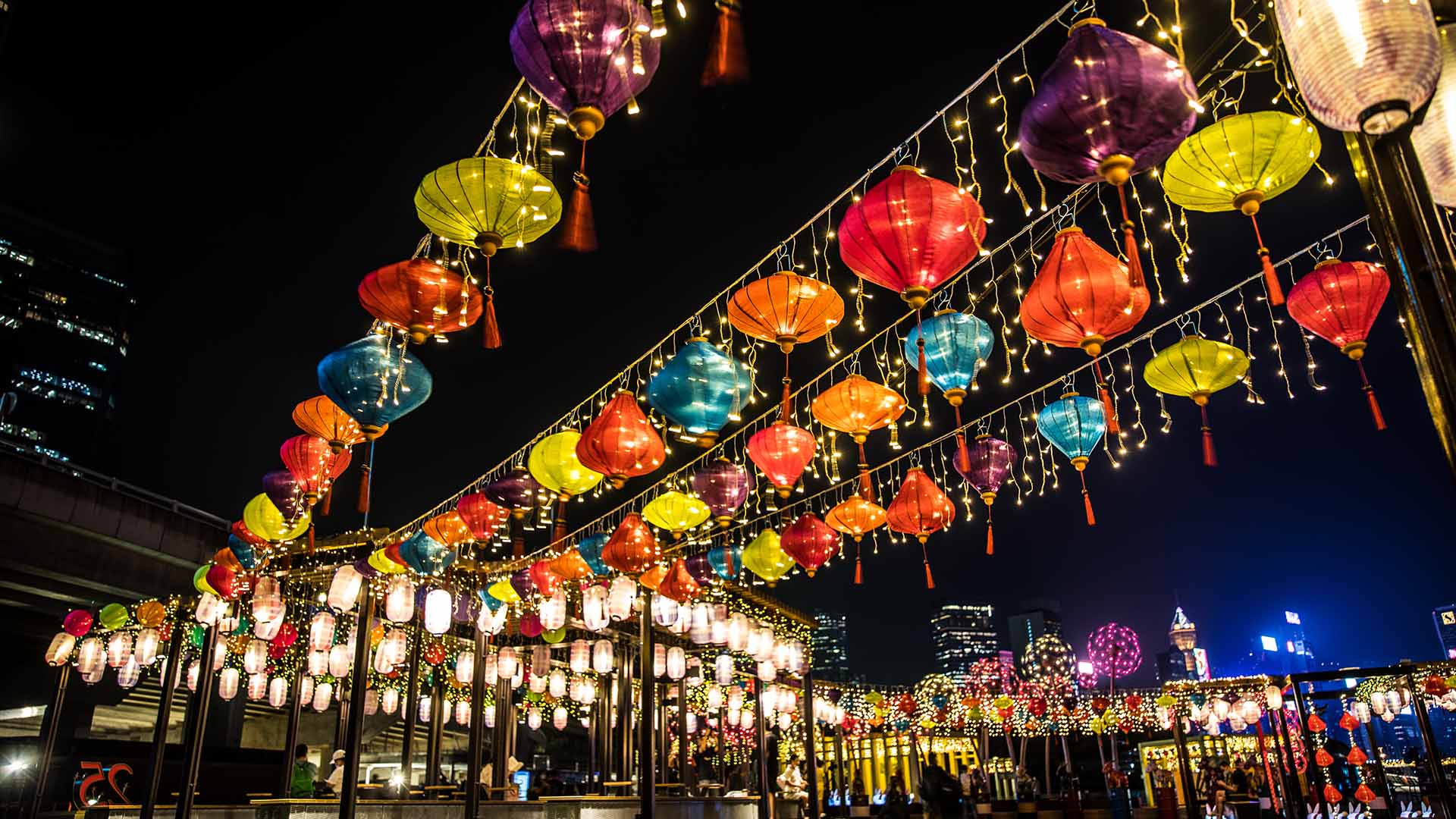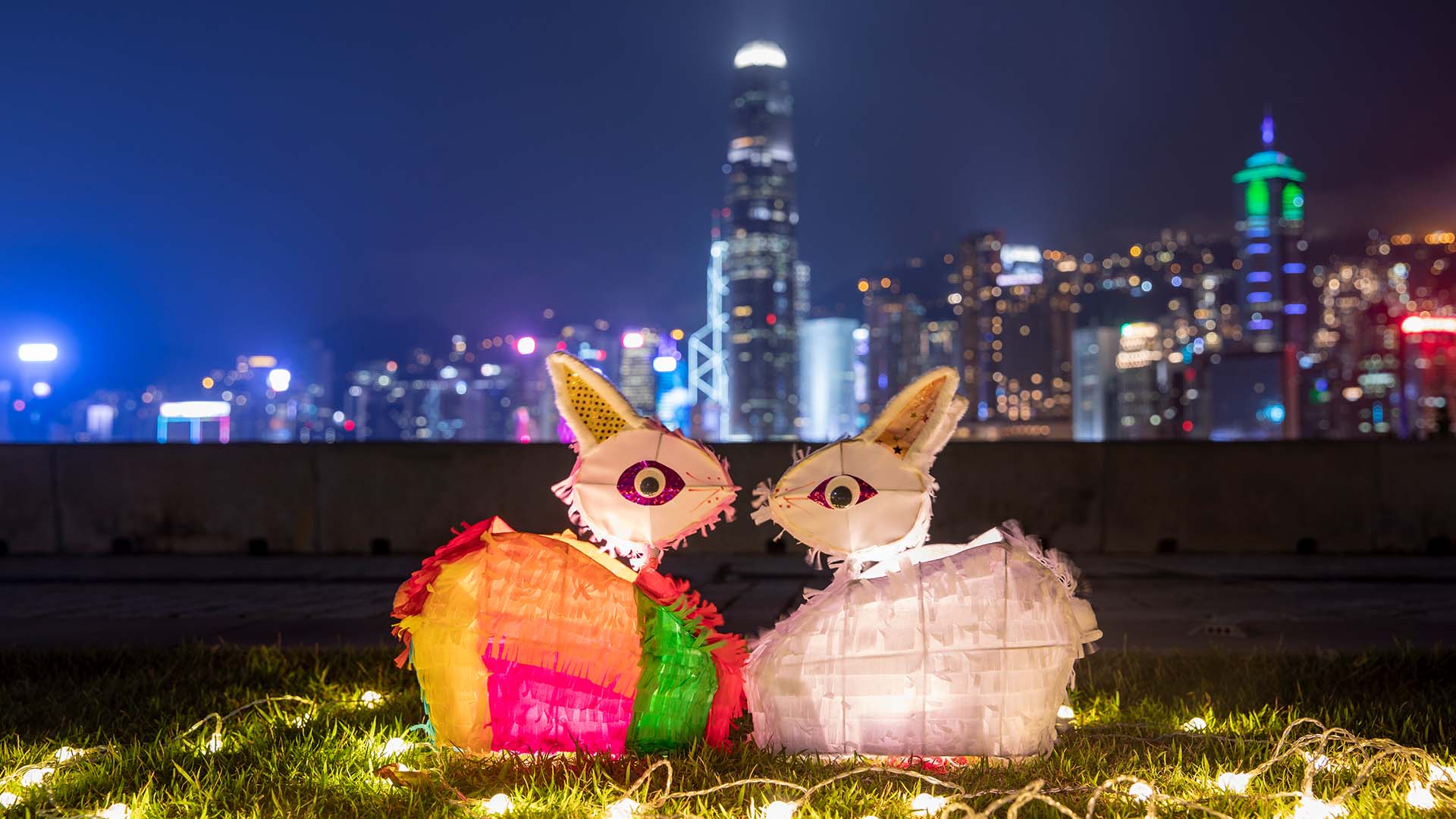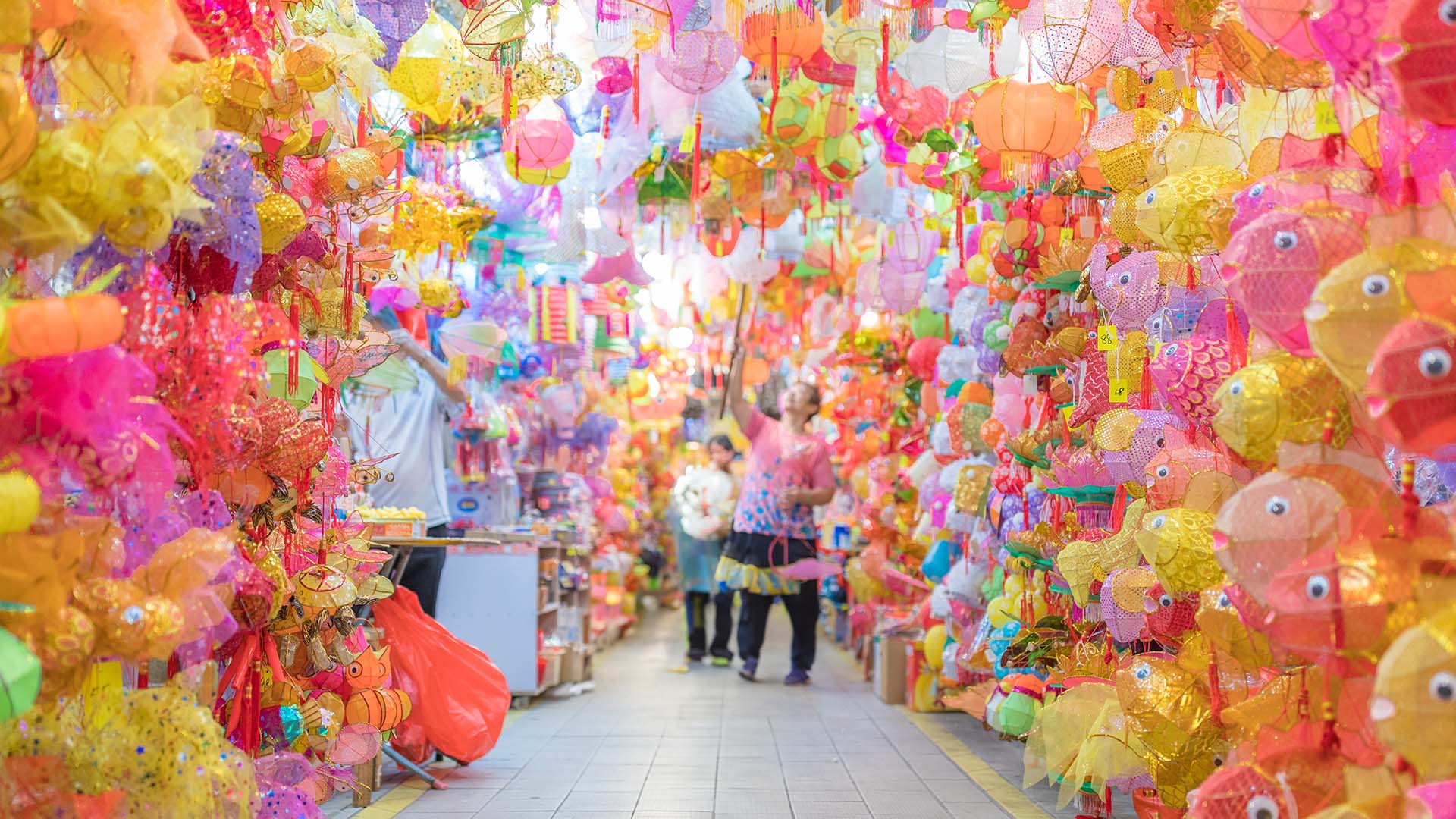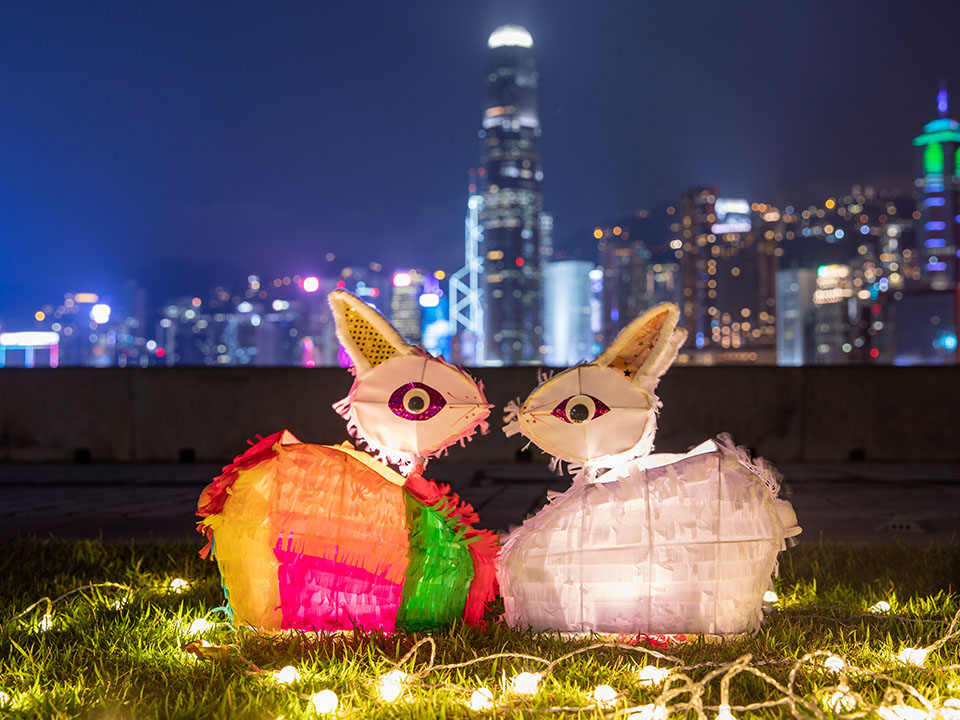
The Mid-Autumn Festival has always been one of the most significant events on the Chinese cultural calendar. Also known as the Mooncake Festival or Moon Festival, Mid-Autumn is celebrated on the full moon day — the 15th day of the eighth lunar month. Due to the discrepancies between the lunar and Gregorian calendars, its exact date varies every year. In 2024, the Mid-Autumn Festival falls on 17 September.
Mid-Autumn is a festival of many customs. Traditionally, Chinese people will express gratitude to the moon and celebrate the bountiful harvest of their crops. It is also an occasion to pray for better luck and engage in moon gazing. More importantly, Mid-Autumn is when families reunite and celebrate being together after time spent apart. Read on to find out more about the festival’s origin, traditions and festivities in Hong Kong.

There are many folk stories regarding the origins of the Mid-Autumn Festival, but the most well-known is the legend of Hou Yi and Chang’e. According to the myth, there were once ten suns in the sky, and Hou Yi shot down nine of them to save the earth from being scorched. As a reward for this heroic deed, he was granted an elixir of immortality. Unfortunately, an apprentice tried to steal the elixir and Hou Yi’s wife, Chang’e, had no choice but to consume it herself.
Weightless and immortal, Chang’e ascended until she reached the moon, where she resides as the Moon Goddess, together with the Jade Rabbit. That’s why the rabbit motif is common in Mid-Autumn festivities, and one of the most traditional lanterns is fashioned after this animal. To this day, moon gazers try to make out the shape of Chang’e and the Jade Rabbit within the shadows on the face of the full moon.

Because the full moon represents reunions, families take advantage of the festival as a chance to gather, usually for a family meal which ends with mooncakes, glutinous rice balls and seasonal fruits.
Of course, admiring the full moon itself is also a must, starting with welcoming the moon on the eve of Mid-Autumn, moon gazing on the night of the festival itself, and bidding farewell to the moon on the following day. Ancient Chinese poets often wax lyrical at the moon, so perhaps you will also be struck by inspiration! The best moon gazing spots in Hong Kong include the Sun Yat Sen Memorial Park, Victoria Park, Tamar Park, West Kowloon Art Park and Hong Kong Park.
Children used to be taught to make and decorate their own paper lanterns, but with the scores of lantern shops that sprout up across the city, it is much easier to simply purchase and head to the park at night, illuminating your way with a lit lantern. Some versions are electronically operated and even play music, but you can definitely still buy the traditional paper variety.
Another Mid-Autumn tradition is solving lantern riddles. Riddles written on slips of paper would be attached to lanterns, and usually contained auspicious messages of wisdom and good fortune.
Mid-Autumn signifies the presence of lanterns displays throughout the city. These can commonly be found in parks, or along the Harbourfront Shared Spaces, Tsim Sha Tsui promenade, Lee Tung Avenue, and more. Some of these lanterns have been equipped with modern technology such as LED lights, so don’t be surprised if you’re treated to a light show. Pop by Victoria Park in particular for the largest Mid-Autumn lantern carnival in town.
Another Mid-Autumn Festival tradition unique to Hong Kong is the Tai Hang Fire Dragon Dance parade. Featuring a massive dragon adorned with 12,000 burning sticks of incense, the fire dragon dance is said to have originated as a ceremonial practice to protect the neighbourhood from a plague. Still upheld by a dedicated Hakka community, this distinctive parade has since been inscribed on both Hong Kong’s list and the National List of Intangible Cultural Heritage. Pok Fu Lam Village also hosts their own Fire Dragon Dance celebration.

Needless to say, mooncakes are the quintessential symbol of the Mid-Autumn Festival. These round pastries embody the full moon, symbolising unity and harmony. Traditionally, they contain a lotus seed paste and salted egg yolk centre. Over the years, bakeries have developed a wide variety of contemporary flavours — take your pick from frozen snow skin mooncakes to those with tea, coffee, truffles and mochi fillings. Mooncakes are notoriously filling, so cut them up into wedges and share with your loved ones.
Fruits are also a staple food during this season, especially ones which have Chinese names or shapes that carry auspicious connotations. Star fruit and pomelo are some examples of this, so stock up!
Family reunion meals are always rounded off with glutinous rice balls (tong yuen). The character ‘yuen’ is present in the Chinese word for ‘togetherness’ (tuen yuen). They come in a variety of flavours, but the black sesame or peanut fillings are the most traditional.
Lastly, osmanthus wine or tea is often paired with mooncakes — osmanthus is believed to be the key to longevity.
Fun fact
Since most Mid-Autumn celebrations take place at night, the day after the Mid-Autumn Festival is observed as a public holiday instead of the festival date itself. If the day after the festival falls on a Sunday, the following Monday will be designated as a public holiday. MTR and bus services will also be extended, running overnight on the festival night.
Information in this article is subject to change without advance notice. Please contact the relevant product or service providers for enquiries.
The Hong Kong Tourism Board disclaims any liability as to the quality or fitness for purpose of third party products and services; and makes no representation or warranty as to the accuracy, adequacy or reliability of any information contained herein.







